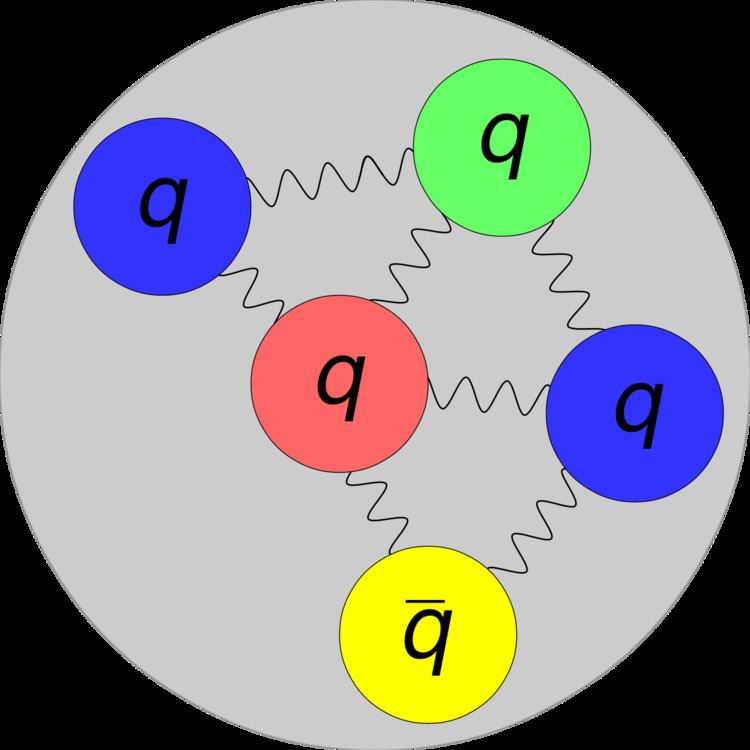 | ||
Exotic hadrons are subatomic particles composed of quarks and gluons, but which do not have the same quark content as ordinary hadrons: exotic baryons differ from the three-quark (qqq) content of ordinary baryons, and exotic mesons differ from the quark-antiquark (qq) content of ordinary mesons. Hadrons with explicit valence gluon content would also be considered exotic. In theory, there is no limit on the number of quarks in a hadron, as long as the hadron's color charge is white, or color-neutral.
Contents
Consistently with ordinary hadrons, exotic hadrons can be classified as being either fermions, like ordinary baryons, or bosons, like ordinary mesons. According to this classification scheme, pentaquarks, containing 5 valence quarks, are exotic baryons, while tetraquarks, containing 4 valence quarks, are exotic mesons. Hexaquarks, containing 6 valence quarks, have not been observed; depending on their quark content, they could be viewed as a dibaryon, or, alternatively, as a triple meson.
Exotic hadrons can be searched for by looking for S-matrix poles with quantum numbers forbidden to ordinary hadrons. Experimental signatures for such exotic hadrons have been seen by at least 2003 but remain a topic of controversy in particle physics.
Jaffe and Low suggested that the exotic hadrons manifest themselves as poles of the P matrix, and not of the S matrix. Experimental P-matrix poles are determined reliably in both the meson-meson channels and nucleon-nucleon channels.
History
When the quark model was first postulated by Murray Gell-Mann and others in the 1960s, it was to organize the states known then to be in existence in a meaningful way. As quantum chromodynamics (QCD) developed over the next decade, it became apparent that there was no reason why only 3-quark and quark-antiquark combinations could exist. Indeed, Gell-Mann's original 1964 paper alludes to the possibility of exotic hadrons. In addition, it seemed that gluons, the mediator particles of the strong interaction, could also form bound states by themselves (glueballs) and with quarks (hybrid hadrons). Several decades have passed without conclusive evidence of an exotic hadron that could be associated with the S-matrix pole.
In April 2014, the LHCb collaboration confirmed the existence of the Z(4430)−, discovered by Belle, and demonstrated that it must have a minimal quark content of ccdu.
In July 2015, LHCb announced the discovery of two particles, named P+
c(4380) and P+
c(4450), which must have minimal quark content ccuud, making them pentaquarks.
Candidates
There are several exotic hadron candidates:
